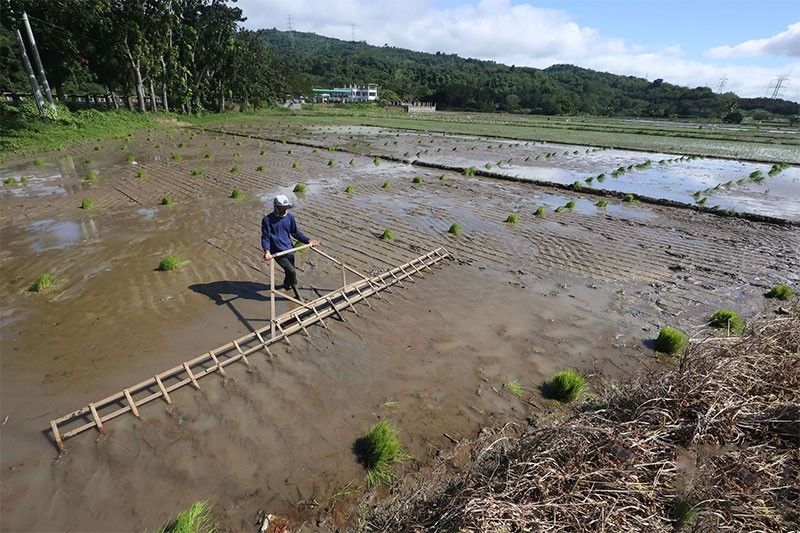Farmers to seek Supreme Court relief vs reduced rice tariff

MANILA, Philippines — Farmers’ groups will ask the Supreme Court to stop the implementation of Executive Order 62 that allows a 15 percent tariff on imported rice, down from the current 35 percent, until 2028.
Graft charges will also be filed before the Office of the Ombudsman against National Economic and Development Authority (NEDA) Secretary Arsenio Balisacan and officials of the Tariff Commission, according to Samahang Industriya ng Agrikultura (SINAG) legal counsel Virgie Suarez.
“Our priority now is the filing of a temporary restraining order (TRO) before the Supreme Court because what we want is to immediately stop the implementation of Executive Order 62 and then the graft charges against NEDA and members of the Tariff Commission will come after,” Suarez said at a press conference in Quezon City yesterday.
She added that the TRO petition would be filed before the effectivity of the EO on July 6.
“After the publication (of EO 62) on reduced tariff, it will be effective 15 days after or on July 6. We are planning to file on July 4 or July 5,” Suarez said.
EO 62, signed by Executive Secretary Lucas Bersamin by authority of the President on June 20, modified the nomenclature and rates of import duty on various products, including rice, for the 2024-2028 period.
The levy on rice, which covers both in-quota and out-quota rates, is subject to review every four months based on the EO.
Under the same EO, Marcos extended the effectivity of the lower rates on pork, mechanically deboned meat (MDM) of poultry and corn.
Pork imports have an in-quota tariff of 15 percent and out-quota rate of 25 percent, while the tariff on poultry MDM would stay at five percent until 2028.
The tariff rates on corn would remain at five percent for in-quota shipments and 15 percent for out-quota volume.
Among the grounds to be raised before the SC is the lack of public consultation conducted by the Tariff Commission, according to the SINAG legal counsel.
“There is no public hearing by the Tariff Commission. We just learned about it when there was a recommendation made by the NEDA and then suddenly, EO 62 was issued. What was surprising was that it was signed on June 21, and it was immediately published on the Official Gazette,” she said.
Suarez also questioned the hasty implementation of EO 62.
“At stake here is the stomach and the livelihood of the farmers. Another ground is the unjustifiable reduction in the tariff because that will not resolve the inflation. That will not also decrease the price in the market of rice,” she said.
SINAG chairman Rosendo So said that at least 500,000 farmers would be displaced amid the flooding of imported rice in the country.
“We now import at least 28 percent of our rice supply. Farmers are affected. This early, because of the reduced tariff, rice millers are afraid to mill. They have a lot of stocks. Based on our report, the farmgate price of palay in Pampanga had already dropped to P18 per kilo for fresh harvest and P21 per kilo in Pangasinan,” So said.
He added that the United States Department of Agriculture (USDA) had projected that rice imports would reach 4.6 million metric tons or one million MT higher compared to the total rice imports last year.
“With more than one million additional rice imports this year, at least 400,000 hectares of palay plantations will not be planted, affecting at least 500,000 farmers. Our local production will decrease, which is contrary to the direction of President Marcos to boost local production,” So said.
Rice imports next year could even increase to 4.8 million MT, according to the SINAG chief.
“This means, the farmers will not only suffer this year but also next year with additional rice imports. Our farmers will surrender because of the lower tariff,” he said.
Former agriculture secretary Leonardo Montemayor projected at least P80-billion losses with the reduced tariff on imported rice.
“Our estimate on a per-kilo basis in the earnings of rice farmers is anywhere from P3 to P4 per kilo amid the drop in palay. If you multiply that by 12 million MT, that’s P36 billion to P48 billion. That’s only now and the end of the year, assuming that the total rice imports will be four million MT. The last projection was 4.6 million MT, the P3 to P4 drop could still increase to P5 (per kilo). Our preliminary estimate, based on the four million MT total rice imports, would be P80 billion. The impact (of the reduced tariff) not only to the farmers, but also in the overall rice economy is huge,” Montemayor said.
United Broiler Raisers Association (UBRA) president Elias Jose Inciong questioned the decision to implement the reduced tariff not only on rice, but also on pork, chicken and corn until 2028.
“This is an admission from the NEDA that the inflation will remain high until 2028. It is an act of surrender. What will be the effect on the confidence in the economy as the government cannot control inflation and we have to do this up to 2028?” Inciong said.
Goat meat
Meanwhile, Montemayor yesterday asked Department of Agriculture (DA) and Bureau of Animal Industry (BAI) officials to lead the goat meat tasting amid the Q fever scare after the first case of the disease was confirmed with infected goats from the United States.
In a chance interview with The STAR at the same press conference, the former DA chief noted that many Filipinos eat goat meat, particularly those who do not consume pork.
“Many eat (goat meat), like caldereta and papaitan. So hopefully, it will not affect the market for local goats,” he said.
The DA and BAI confirmed the first case of Q fever in the country after 19 samples of imported goats from the US tested positive for the disease.
- Latest
- Trending

























